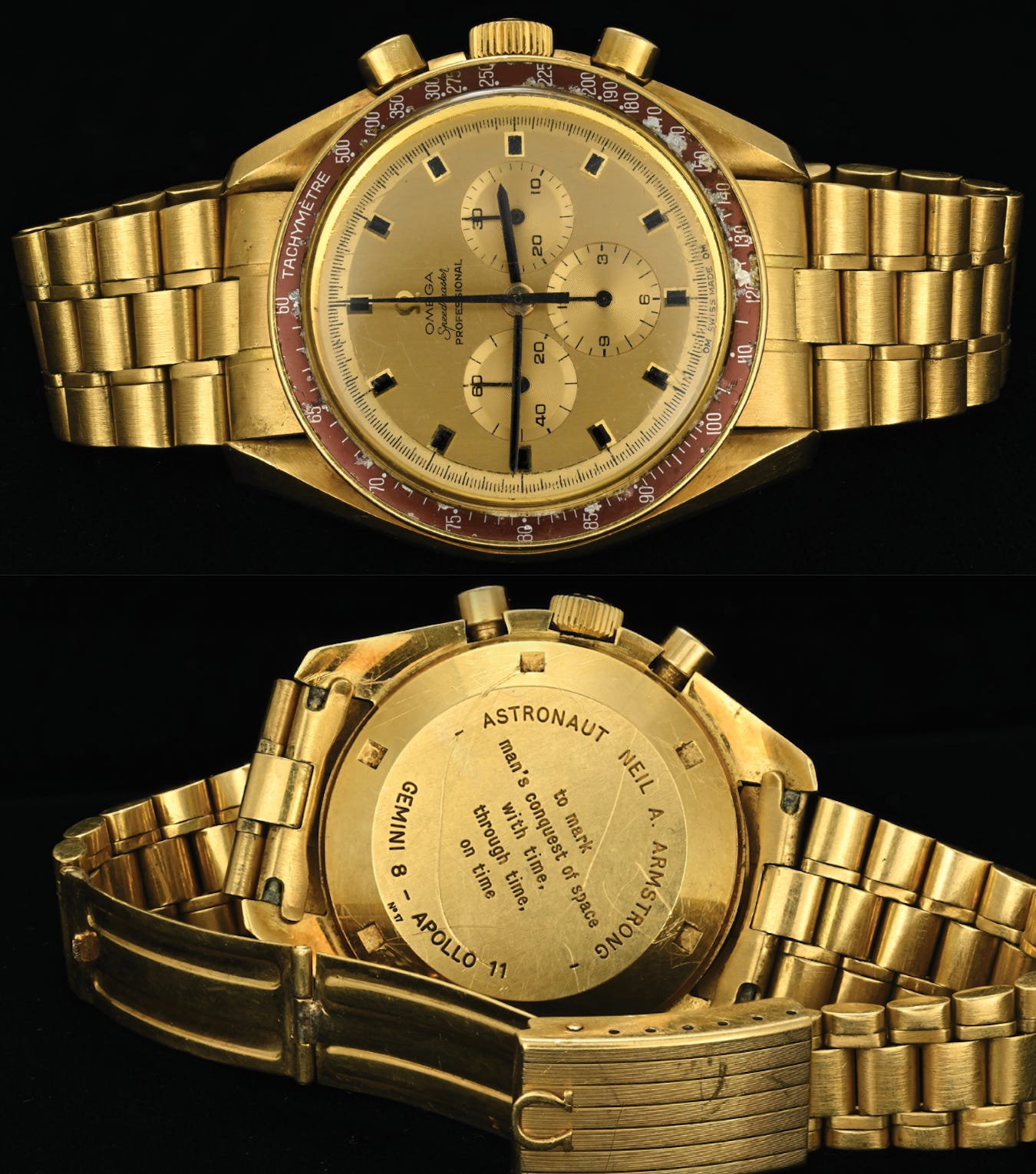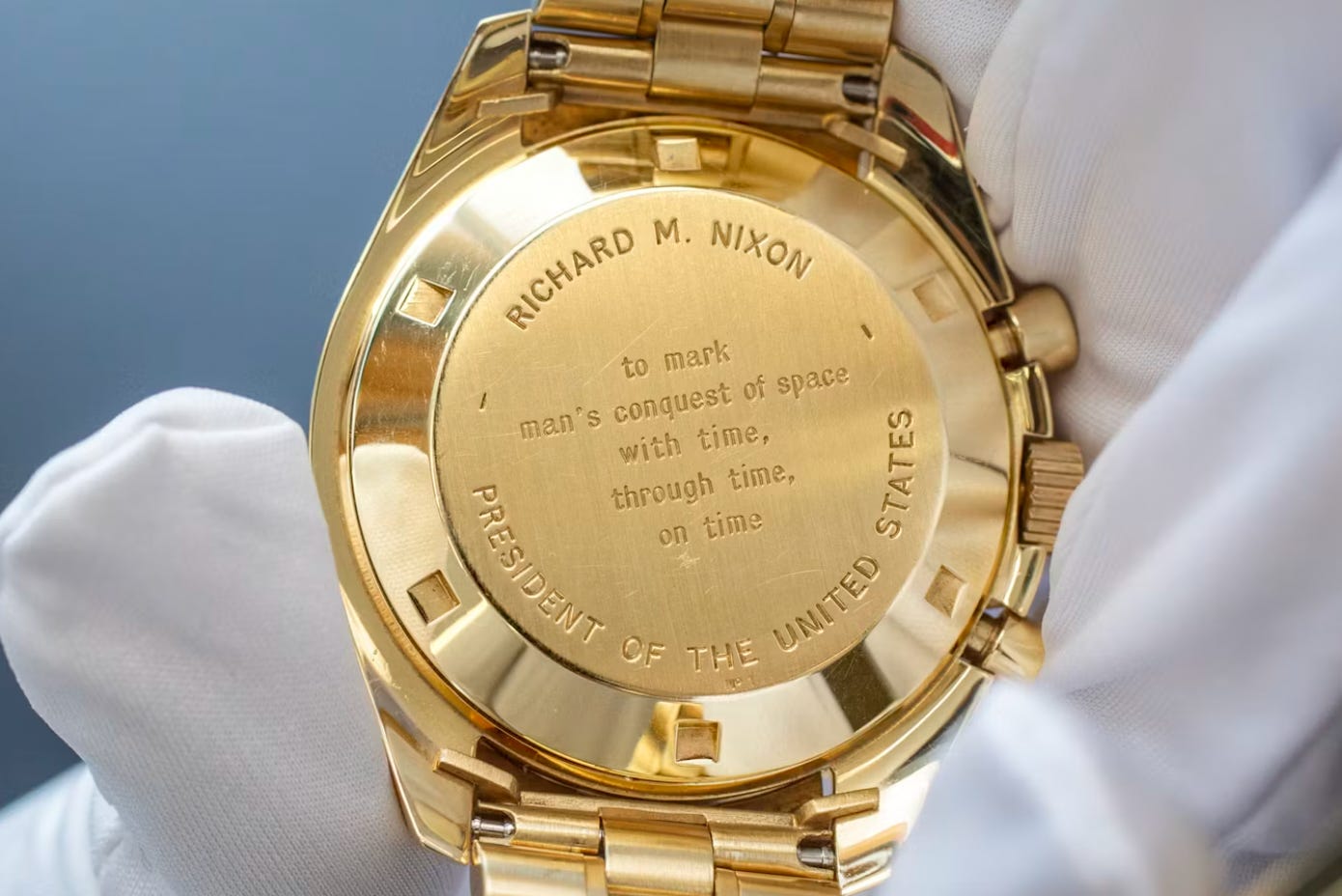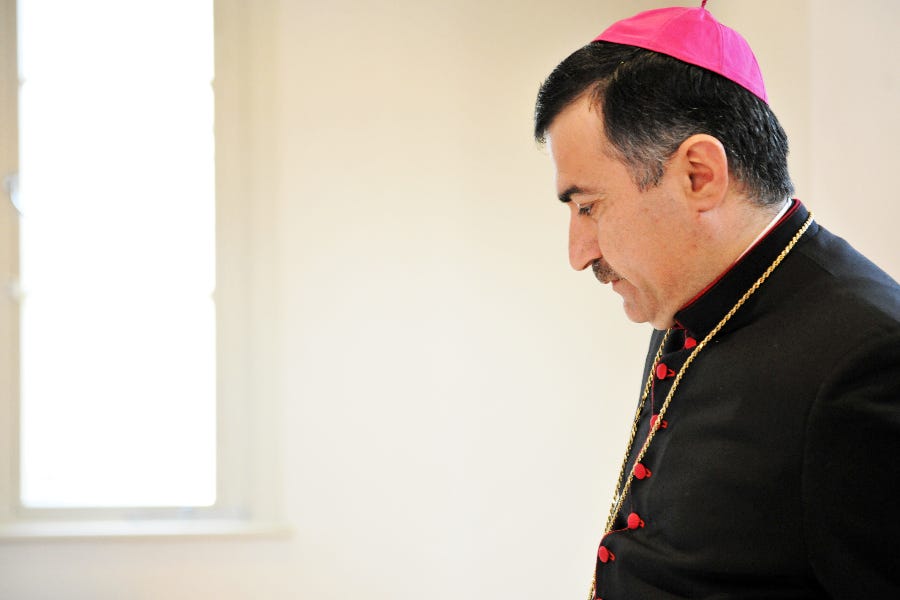Happy Friday, friends,
We’re basically in the Lenten home stretch. This weekend is Mothering Sunday — which originates in the U.K. and is distinct from and predates the knockoff Hallmark version in May by several centuries.
For those who aren’t familiar, the tradition of the day is to make a pilgrimage to your “mother church,” the church of your baptism, in preparation for Easter.
You should call your mother on the day too, of course. That’s just good manners.
Mothers are, of course, wonderful and wonderfully unique, none more so than Our Lady, whom we celebrated already this week at the feast of the Annunciation, the great commemoration of the ultimate mother and son.
We cannot understand or grasp Christ, his nature, his life, ministry, death, and resurrection — or indeed the nature and mission of the Church and our place within it — without contemplating Herself.
And the whole narrative of Lent, of Christ’s temptation in the desert, of the Passover and Exodus narrative, and Christ’s final procession towards Jerusalem is a call to consider the arc of each of our lives, authored and overseen by God, leading us — we hope — to experience the power of the Resurrection on Easter Sunday.
So all of this is good cause to find our way back home to where our journey of faith began, with our baptism.
Of course, I cannot make such a pilgrimage myself. For reasons I won’t rehearse here, I wasn’t baptized in a church at all, but in the living room of my great-grandparents — three states and six dioceses away from the place of my birth.
I no longer have access to that house and, thanks to the canonical indifference of the priest who celebrated the event, the only primary proof that it happened at all is a grainy photo of the event and the testimony of witnesses.
But I wouldn’t change it if I could. The story and circumstances of my baptism, rooted in family and home and faith and travel, is the first and most valuable gift my own mother gave me. And it has, in different ways, been a gift I have been receiving over and over from her ever since.
I am, in the most important and ontological sense, the product of my baptism, as we all are. And I have my mother to thank for that, even if the lack of canonical paperwork has created some headaches along the way.
Here’s the news.
The News
Group text messages, secure and insecure, have been much in the news this week owing to the fat thumbs of the U.S. National Security Adviser adding a journalist to a group chat on a forthcoming bombing raid on Yemen.
While the Vatican has never, to my knowledge, bombed any Houthis, it does have a highly developed sense of state security, and protocols for the handling of confidential information.
And senior curial officials, not unlike the Trump administration it seems, have been known to resort to encrypted apps like Signal and WhatsApp to discuss some pretty sensitive issues — often with embarrassing consequences.
So, how does the Church communicate confidentially?
—
An Iraqi cardinal has called for a major change in how Christian representatives are elected to the country’s parliament, ahead of a vote scheduled for October.
Cardinal Louis Raphaël Sako issued the appeal March 26, arguing that the current process failed to ensure Iraq’s Christian minority was genuinely represented in parliament.
In Iraq, Sako’s move is likely to be seen as part of his ongoing clash with Rayan al-Kildani, a party leader who styles himself as the de facto protector of Iraq’s Christian minority.
And that whole story is itself linked to simmering tensions between Sako and his most senior archbishop.
—
The French bishops will gather in Lourdes on Monday to elect a new conference president.
All the expectation and popular wisdom has the race as a forgone conclusion for the Cardinal Archbishop of Marseille, but we like to cover all the bases here.
So, in a Look Closer analysis yesterday, Luke Coppen took a hard look at the whole field and brings you a rundown of all the runners and riders.
—
A Capuchin priest who stole more than $500,000 by pretending to be an aristocrat and to run medical clinics in Lebanon was sentenced to five years in prison Thursday.
Fr. Pawel Bielecki pled guilty to wire fraud, pretending to be a doctor, and falsely claiming direct lineage to two European royal families, in an elaborate scheme involving disguises and fake websites.
The sentence, which includes three years of supervised release after his incarceration, suggests the judge was unconvinced when attorneys argued that the priest shouldn’t be sentenced to more than two-and-a-half years because his criminal behavior stemmed from alleged childhood abuse.
It’s a very weird and very sad story.
—
Pope Francis has asked the Pontifical Commission for the Protection of Minors to commit to working more closely with the Roman curia in a message to the body’s plenary assembly this week.
In his annual message, the pope praised the commission’s work, which he called “a promise: that every child, every vulnerable person, will find a safe environment in the ecclesial community.”
Now, don’t get me wrong, the PCPM working more closely with the curia would be a very good thing indeed. But many of its members will likely have heard the pope’s words to them in a state of beggared belief, since the commission has been calling — and striving — for such cooperation virtually since its creation, and it isn’t for want of commitment on their end that it isn’t happening.
On the contrary, the commission itself has been loudly complaining about the refusal of various dicasteries to cooperate with them, or even conduct themselves with a basic level of transparency and consistency on the issue of child protection for years — including in its annual report last October.
Thanks to the generosity of the Knights of Columbus, St. Bernard’s School of Theology and Ministry invites anyone anywhere to audit one summer course entirely free (a $375 value). Learn more about topics such as St. Thomas Aquinas’ Summa Theologiae, Introduction to Biblical Studies, 20th Century Holiness, and more. Application deadline for Summer Session I is April 25th. Learn more here!
A Mess
No single case in the Church better illustrates the PCPM’s frustrations with Church institutions than that of Fr. Marko Rupnik, the disgraced religious artist and former Jesuit accused by dozens of religious sisters of the worst — most blasphemous — kind of violent sexual abuse over a period of decades.
Despite having been tried, convicted, excommunicated, and then rehabilitated (all in secret) for crimes against the sacraments — to say nothing of the grotesque litany of abuse cases pending against his name — Rupnik remains very much a “priest in good standing” and free to go about his business.
Indeed, the cases against him are only grinding slowly forward at all because the PCPM decided — rather bravely I’d say — to go to war over the issue, jumping over the heads of both the Dicastery for the Doctrine of the Faith and the Society of Jesus to press the need for action to the pope personally in 2023, when both seemed pretty set on washing their hands of the case.
As a result of that intervention, Pope Francis personally waived the statute of limitations on the Rupnik case and ordered the DDF to get to work. In the nearly 18 months since, a court has yet to be constituted to bring things to trial.
The DDF’s prefect, Cardinal Victor Manuel Fernandez said this week, as he did in January, that his department was having some trouble picking judges for the case, given its high profile. I find this, as I did the last time he said as much, baffling, given the DDF has a stable roster of approved jurists for the purpose.
From my own past canonical experience with the DDF, I have never before noted any difficulty or reluctance from its members to serve on high-profile cases. And it isn’t as if the dicastery habitually publishes the names of who is judging what case — so they can hardly fear public pressure.
There are, at least from what I can see, only two conclusions that could be drawn here:
Either the DDF is simply dragging its feet on the case, which I would be loath to contemplate, or to think its officials capable of. Or they really are having a hard time finding judges, everything I’ve said before notwithstanding.
If it is the latter, one has to wonder if the problem with the Rupnik case is that all the potential judges think the thing is too hot to handle, or if so many of them have some personal connection to the guy that it’s hard to find a panel who can be truly impartial.
If that’s the issue, we really do have a problem. And we really are seeing, yet again, how clerics of a sufficient profile and with the right connections can avoid justice for so long.
—
Of course, that Rupnik is still a cleric at all right now is directly down to choices made by his former order, the Jesuits, who this week announced a program of reparations to his many alleged victims.
The Society of Jesus moved to expel Rupnik in 2023, after an internal assessment of the allegations against him found them to be of “a very high degree of credibility.”
But, in kicking Rupnik out, the Jesuits explained that they had no real power to prosecute his alleged crimes because of the as-yet-unlifted canonical statute of limitations — he was expelled for the crime of religious disobedience in refusing to cooperate with the investigation into his actions.
And, the order insisted, while “Many have asked us why a process that could lead to the loss of the clerical state of Marko Rupnik has not been carried out,” “this is not in itself the competence of the Society of Jesus.”
Announcing the reparations program on Wednesday, the Jesuits said “We are not comfortable with the current situation,” and that "the various forms of violence suffered at that time were compounded by the suffering caused by the lack of support and justice for many years."
That sounds fine. But let’s be clear, the Society of Jesus may be “not comfortable with the current situation,” but it’s a situation of their own making.
The order chose to let him continue as a priest, to find a bishop to incardinate him, and to carry on in ministry. That was their choice, and the direct consequence of that choice is that Rupnik remains a cleric and his dozens of (alleged) victims remain in search of justice.
To be sure, some outreach by the society to Rupnik’s (alleged) victims, however belated, is better than none. But the sincerity of their sentiments might be better served if they started by owning the mess they made, and apologizing.
A life’s ambition
Everyone needs hobbies they take a little too seriously — little corners of interest and fascination into which you can escape and to which you can focus attention just for the sheer pleasure of the thing.
As readers of these newsletters probably know, my own little cottage obsession is watches. I read about them, pore over new releases and old reference numbers, I debate their merits and drawbacks avidly with friends in group texts the way the national security team does with air strikes.
My favorite daydream, as I have often claimed around the office (to the ridicule of some, Michelle), is that one day The Pillar gets big enough that I can sell out and write about watches full time.
So imagine my joy when I got a note yesterday in my inbox from a PR company soliciting my coverage of an actual watch story.
Now, does the fact that PR agencies are pitching watch content to say something weird about The Pillar? Probably. But it must mean I’m doing something right at the level of personal wish fulfillment.
Either way, this is the kind of personal validation you just can’t pass up. Even more so because I happen to have a serious sidecar interest in space travel and the story in question is the auction of Neil Armstrong’s Omega Speedmaster.
Would I be interested in writing about it? Just try and stop me.
I don’t, I hope, need to explain to anyone who Neil Armstrong is.
And for those of you who don’t know, the Omega Speedmaster is the space watch, the first approved by NASA for flight missions. It’s the first watch worn on the moon. It’s the watch Jim Lovell used to time the rocket bursts that brought Apollo XIII home safe when absolutely nothing else on the ship worked. It’s an icon.
Of course, the watch coming up for auction isn’t and couldn’t be the actual first watch to be worn on the moon. I knew that before reading the details.
Armstrong’s mission-issued Omega is already on permanent display at the National Air and Space Museum — and that one wasn’t technically worn on the moon, Armstrong left it in the landing module. The actual first watch worn on the moon was Buzz Aldrin’s Speedmaster, which went mysteriously “missing” on its way to the Smithsonian in 1973.
I assumed the auction item would instead probably be his other mission watch, from the Gemini VIII flight. But not exactly.
The watch in question is actually a gold version of the moonwatch, part of a limited run of 28 made by Omega and personalized to give as gifts to legends of the space program at a big gala in Houston in 1969.
Armstrong, according to his son, wore the watch on special occasions for the rest of his life. It is, as far as that goes, a bona fide piece of American spacefaring horological history.
But if I am being honest, I am skeptical it will fetch the $2,000,000 the auction house says they expect to get for it.
For a start, the watch market has cooled considerably over the last two years, after metaphorically going to the moon during the 2010s and through COVID — the U.S. market in particular is down this year.
And bidding on rare vintage Omegas took an extra hit after a scandal involving a Netflix-worthy plot to successfully fake a rare watch and sell it for a world-record $3 million back in 2023.
To be clear, there’s no doubt about the authenticity of the Armstrong watch, but I think getting the full $2m on this will be a reach. Unless, of course, Elon Musk and Jeff Bezos decide to get in a bidding war over the thing as a kind of “I own my own space company” status symbol.
If they do, good luck to them, and good for the auction, the proceeds of which are going to charities selected by the Armstrong family.
But even if I had a billion dollars, I’m not sure I’d be bidding on this one. For a start, I don’t believe in buying watches you wouldn’t wear, and solid gold isn’t really my look. Gold watches work best if you’re on a golf course or courtside at an NBA game, and I hate golf and can’t afford courtside seats.
The all-gold Speedmaster was minted, to be clear, not to be used as a tool but as a celebration piece, commemorating the world-beating successes of NASA programs of the 1960s, culminating in the Apollo XI trip to the moon. It wasn’t a part of the mission, but it was a kind commemoration of it.
Yes, it is Neil Armstrong’s watch, and yes it does have a very specific story behind it — and it is a cool story, and Armstrong did wear it for years afterward.
But given what a private, unshowy guy he was after his one small step — he described himself as a very “reluctant American hero” — a big gold watch seems like a perversely inverted totem of the man and what he achieved.
You could actually argue that a “Neil Armstrong watch” that derives all its value and interest from the man and not the mission is the kind of thing Armstrong himself would have hated. The early astronauts were fiercely competitive in their work but tended to be pretty shy of personal celebrity; it was a key part of what Tom Wolfe coined as “the right stuff.” It’s one of the reasons I think they have, as a class, aged so seamlessly into a kind of tapestry of national legends.
Of course, that isn’t to say there isn’t a gold Speedmaster I wouldn’t pay $2m for if I had the money — there is one, and it actually has never been worn by its intended owner at all. But it tells a whole different story, and it’s never coming up for sale.
Of the 28 customized gold Speedmasters handed out at the dinner in 1969, Armstrong’s was #17. Guess who #1 was minted for…
The first was actually customized and intended for Nixon, who had to turn it down, because it was too valuable to accept as a gift and too pricey to buy for himself.
You can just imagine the famously insecure Tricky Dick seething with resentment and inadequacy, his prize just out of reach, knowing full well a Kennedy would and could have paid cash on the nail.
So back to Switzerland Nixon’s watch went, where it lives, still good as brand new, in the Omega factory museum.
Now that’s a watch which tells the real story of a man, and he never even got to try it on.
If you’re interested in bidding on Neil Armstrong’s watch — and if you are and you have the scratch, don’t let me put you off — it’s currently sitting at around a quarter mil as of print time, and that would be a steal.
But if you’re shopping in a slightly lower price range and still want that Moonwatch feeling on your wrist (I ask you, who wouldn’t?) you can pick up a used (or “vintage” for you hipsters out there) one — mission flight specs — for a hundredth of that price.
Now, maybe you want a Speedmaster that does all the Moonwatch things but is just a little fancier than the standard issue because, you know, you’re not going into space yourself and this is a luxury purchase after all. I’d recommend this little number with a white gold bezel (much lower profile than yellow) and a phases of the moon display. This one is, for me, about the perfect sweet spot of style and substance.
In fact, I’ll get one one day — probably the same day I can afford to turn pro writing about watches.
Sure, the distance between there and getting an email from a PR company looking for some free coverage is about the same as from here to the moon. But if Armstrong taught us anything it’s that small steps get us there. Right?
See you next week,
Ed. Condon
Editor
The Pillar









